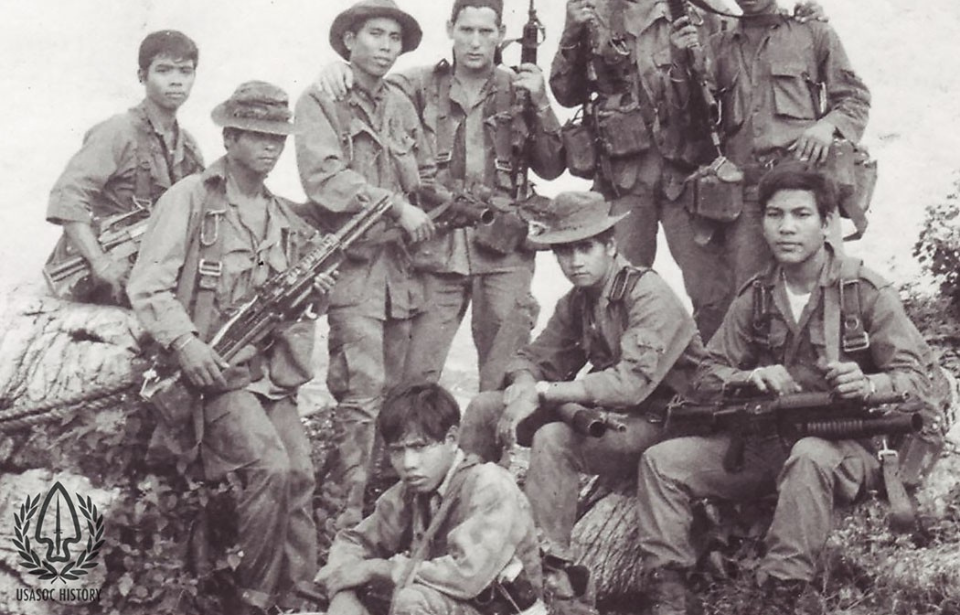You’re likely acquainted with the esteemed US Navy SEALs and the US Army’s Green Berets, both renowned for their expertise in guerrilla and counter-guerrilla tactics, as well as their roles in training indigenous forces and combating insurgencies during the Vietnam War. However, it’s worth noting the significant contributions of MACV-SOG, which seamlessly integrated personnel from these elite units alongside members of the CIA. Together, they formed an unparalleled clandestine force that executed covert operations with exceptional efficiency throughout the conflict.
The mission of MACV-SOG encompassed a wide range of unconventional warfare efforts in Vietnam. From reconnaissance and daring rescue missions to psychological operations and the apprehension of enemy combatants, their operations wielded substantial influence over the course of the war.
MACV-SOG’s top-secret beginnings
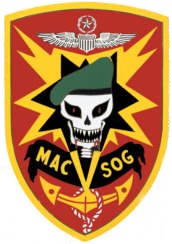
On January 24, 1964, MACV-SOG, officially known as the Military Assistance Command, Vietnam – Studies and Observations Group, came into existence. Comprised of operators from the most elite branches of the US military, including Green Berets, Navy SEALs, Air Force Commandos, CIA operatives and veterans of the Marine Corps’ reconnaissance units, the group was an assembly of specialized talent.
Initially, MACV-SOG’s operations in Vietnam were overseen by the Special Assistant for Counterinsurgency and Special Activities within the US Department of Defense. This arrangement granted the authority to conduct missions beyond the borders of South Vietnam. Eventually, control of the group was transferred to the military.
A significant portion of MACV-SOG’s missions occurred within North Vietnam, and the utmost secrecy was imperative. This discretion was necessitated by the official American stance that the US forces were confined to operations within South Vietnam. Additionally, the group dedicated efforts to missions in Laos and Cambodia, due to the strategic significance of the Ho Chi Minh Trail, which played a crucial role in supporting the North Vietnamese Army (NVA).
Given the exceptionally perilous nature of their tasks, MACV-SOG was exclusively composed of volunteers. The hazardous conditions were so pronounced that the casualty rate for operatives stood at a staggering 100 percent; they understood their service would likely culminate in either receiving a Purple Heart for their valor or returning home in a flag-draped casket.
Unidentifiable Americans
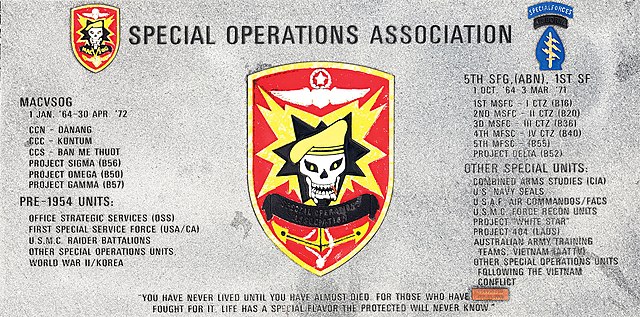
Due to the classified nature of their missions, MACV-SOG followed specific uniform guidelines that were designed to make them indistinguishable as Americans. They donned the distinctive tiger stripe camouflage commonly associated with the South Vietnamese, refraining from displaying any form of identification, including dog tags and patches. Similarly, the Green Berets opted not to wear their identifiable headgear.
Regarding weaponry, MACV-SOG typically wielded either a CAR-15 or AK-47, along with M79 grenade launchers. Notably, the serial numbers of these weapons were removed to prevent identification. Each was meticulously secured to the individual in a manner that minimized any potential noise from their movements. Guns were carried with a canvas strap, while the M79s were attached using a D-ring covered in tape.
In addition to firearms, operators carried supplementary weapons, including fragmentation and V40 mini grenades. This choice of weaponry was as unconventional as the missions they undertook. An illustrative example is Staff Sgt. Robert Graham, a MACV-SOG member who opted for a 55-pound bow equipped with razor-edged arrows, employing it when conventional ammunition became scarce.
Ho Chi Minh Trail
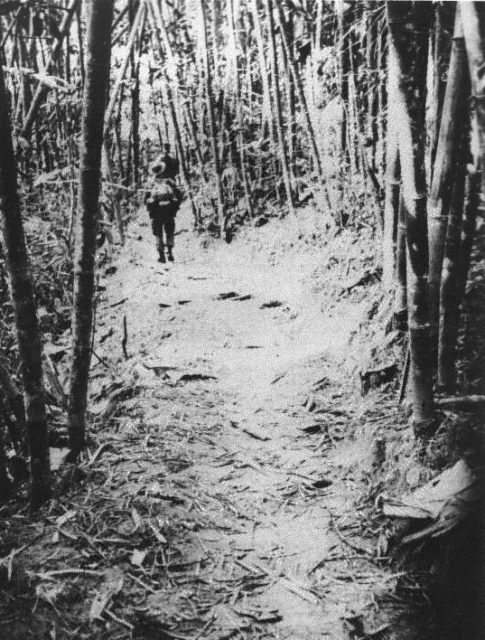
The primary theater of action for MACV-SOG was the Ho Chi Minh Trail, owing to its significance for the guerrillas they confronted. In this area, the group played a pivotal role as the ground operatives, gathering intelligence for Saigon. Their activities included capturing photographs, pilfering enemy documents and tapping into communication lines.
These missions were exceptionally perilous, and the individuals assigned to them received substantial support from local forces, constituting the majority of a unit’s composition. Typically, two-to-four Americans were paired with between four and nine South Vietnamese guerrillas.
In an interview with History of MACV-SOG, Jim Bolen elaborated on the intricacies of executing missions along the Ho Chi Minh Trail, highlighting that each mission unfolded along the network’s vital pathways. These routes were often flanked by extensive enemy encampments accommodating thousands of soldiers.
Illustrative of the daunting challenges faced were such instances as the mission on Thanksgiving Day 1968, when a six-man team confronted an enemy force of 30,000. Another example was Frank D. Miller’s solitary encounter with 100 NVA troops.
MACV-SOG operations behind enemy lines
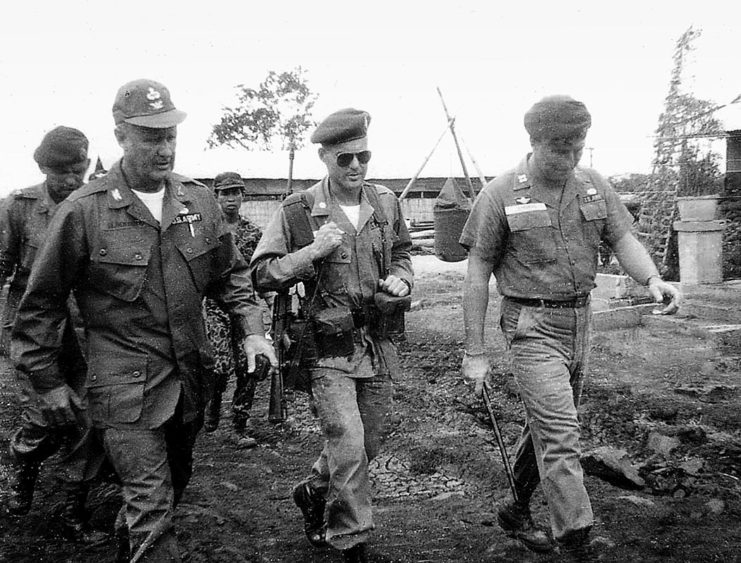
During his interview with History of MACV-SOG, Jim Bolen revealed that he and his fellow operatives were assigned the task of deploying seismic sensors along the Ho Chi Minh Trail. These sensors were monitored by Lockheed C-130E Blackbirds, providing early warnings of significant enemy movements.
It is widely understood that through this method and other reconnaissance efforts, MACV-SOG played a pivotal role in providing 75 percent of American intelligence concerning the Ho Chi Minh Trail.
Additionally, MACV-SOG had another objective during its operations along the Ho Chi Minh Trail: conducting missions to capture prisoners behind enemy lines. Regarded as one of the most perilous tasks, they could serve as either the primary objective or a secondary one if the opportunity presented itself. Regardless, such operations were strongly endorsed by commanding officers.
Prisoner snatching behind enemy lines
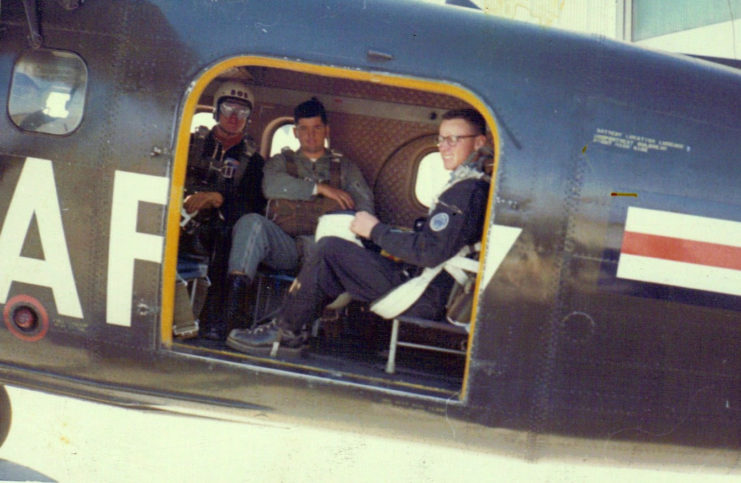
Members of MACV-SOG were incentivized with a reward of $100 for each captured enemy soldier, as well as the promise of rest and relaxation (R&R). Local allies were rewarded with new watches and varying amounts of cash. This incentivization strategy proved effective, leading to several successful captures, such as 12 soldiers in Laos in 1966. These yielded valuable intelligence on enemy troop movements, sizes and base locations.
Capturing prisoners demanded inventive tactics from MACV-SOG operatives. Lynne Black, an operator, meticulously calculated the precise amount of C-4 required to incapacitate a target without causing fatal harm, a process undoubtedly fraught with trial and error. Operatives strategically placed explosives along trails, patiently awaiting the approach of enemy troops before remotely detonating the C-4. This method enabled them to swiftly extract their unconscious targets.
Throughout the Vietnam War, MACV-SOG played a pivotal role in numerous significant engagements, including Operation Steel Tiger, the Tet Offensive, Operation Tiger Hound, Operation Commando Hunt and the Easter Offensive. Despite their skill, their involvement in the conflict remained largely undisclosed until the 1980s.
More from us: Despite Being Up Against 2,000 Enemy Troops, Bernard Fisher Risked His Life to Save a Fellow Airman
It wasn’t until 2001 that the group’s members were formally recognized, with them receiving the Presidential Unit Citation.
